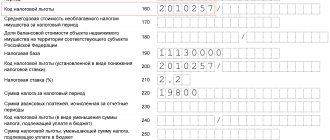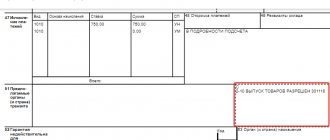What is movable property in simple words
Based on the information in Article 130 of the Civil Code, movable property is considered to be everything that has not been defined as real estate. That is, the bowels of the earth, plots and everything that is installed on them without the possibility of dismantling, maintaining functions and integrity. First of all, this includes buildings, unfinished buildings and other structures. Also real estate is:
- vessels (sailing within the Russian Federation and in the seas abroad);
- space objects;
- aircraft;
- part of the structure where parking spaces for cars are located. One condition must be observed here; the boundaries of this part must be described in accordance with the law on cadastral registration.
Most often, owners of movable property are not required to register it. But, if we are talking about a car, you cannot do without registration. Regarding transactions, they often do not require state registration. An exception may be an item of special value that is in circulation in limited quantities.
The main characteristics of movable and immovable property
The ability to distinguish real estate from movable assets is one of the main requirements for entrepreneurs from regulatory authorities. Many people mistakenly believe that determining whether an asset belongs to a specific group is quite simple. If an object cannot be moved from one point to another, then it belongs to the category of immovable objects. According to the official classification, the group of movable property includes all assets that can be transported from one point to another using one's own forces . It should be noted here that during this process the functions and integrity of these objects will not be compromised. Based on the above, we can conclude that the following items fall into the category of movable assets:
- Vehicles, excluding ships and aircraft.
- Office equipment and computer equipment.
- Industrial equipment and household appliances.
- Stocks, bonds, jewelry, cash and other material assets.
Movable property is material assets that can be physically transferred from one person to another.
The group of real estate includes land plots, building structures, plots of soil and forests, as well as installations of a long-term nature. This means that this category includes all objects that have an inextricable connection with the earth. Moving and transporting such structures can cause a certain level of damage to their characteristics.
The main difference between movable objects and real estate is the absence of the need to officially register property rights . Despite this, there are a number of situations related to certain assets that require mandatory documentation. This group includes firearms and vehicles.
It is important to note that the current provisions of the law provide a list of movable assets, the acquisition of which is accompanied by the registration procedure with the control authorities.
What are the signs to recognize movable property?
Legislative acts do not contain information about what characteristics movable property has, so it is very difficult to name them specifically. In this case, the characteristics should be determined in contrast to those that the property has, namely:
- permanent location and reference to one area;
- inability to move property without losing its integrity and quality.
For example, it will not be possible to remove a house built on a plot or move the plot itself. Also, communications such as an air conditioning system, water supply or sewerage cannot be considered movable property. The main feature by which property must be distinguished is the ability to be transported without losing its main qualities.
Movable property can be birds, farm animals or pets. In Article 130 of the Civil Code of the Russian Federation you can find information only about what characteristics real estate has. If other property does not have these characteristics, it is classified as movable.
Why was the plane classified as real estate?
All planes and ships that fly the flag of the Russian Federation are equated to the territory of Russia, that is, they are part of it. This means that Russian laws will apply on board the ship. The same applies to airplanes and ships from other countries of the world. In addition, this property is subject to mandatory registration, which is one of the main features of real estate.
Movable or immovable property - how to determine?
Chapter 30 of the Tax Code of the Russian Federation, even as amended, effective from 01/01/2019, does not provide the concept of real estate and its differences from movable property. Therefore, the taxpayer must follow the procedure specified in paragraph 1 of Art. 11 of the Tax Code of the Russian Federation. Thus, unless otherwise provided by the Tax Code of the Russian Federation, institutions, concepts and terms of civil, family and other branches of legislation of the Russian Federation used in the Tax Code of the Russian Federation are applied in the meaning in which they are used in these branches of legislation.
What applies to movable and immovable property is specified in Art. 130 Civil Code of the Russian Federation. It is noted that real estate includes land plots, subsoil plots and everything that is firmly connected to the land, that is, objects whose movement without disproportionate damage to their purpose is impossible (including buildings, structures, unfinished construction objects). Real estate also includes aircraft, sea vessels and inland navigation vessels subject to state registration.
Real estate includes residential and non-residential premises, as well as parts of buildings or structures intended to accommodate vehicles (parking spaces), if the boundaries of such premises, parts of buildings or structures are described in the manner established by the legislation on state cadastral registration (clause 1 Article 130 of the Civil Code of the Russian Federation).
Accordingly, property that does not belong to real estate is recognized as movable property (Clause 2 of Article 130 of the Civil Code of the Russian Federation).
When distinguishing between types of property (movable or immovable), it is also advisable to be guided by the criteria given in the Letter of the Federal Tax Service dated October 1, 2018 No. BS-4-21 / [email protected] . Thus, the tax department, in particular, explains that, as a general rule, state registration of the right to a thing is not a prerequisite for recognizing it as real estate (Definition of the Supreme Court dated September 30, 2015 No. 303-ES15-5520). Therefore, to identify the grounds for classifying a property as real estate, it is advisable to investigate: the presence of a record about the object in the Unified State Register of Real Estate; in the absence of information in the Unified State Register of Real Estate - the presence of grounds confirming the strong connection of the object with the land and the impossibility of moving the object without disproportionate damage to its purpose, for example, for capital construction projects - the availability of documents of technical accounting or technical inventory, permits for construction and (or) for commissioning of the object into operation (if necessary), design documentation, expert opinion or other documents containing information about the relevant characteristics of objects, etc.
Types of movable property
In some countries, the civil code is so different that the same things can apply to movable and immovable property. Article 1205 of the Civil Code states that the ownership of things should be determined by the law of the party where it is located. But, if an item is on the road, for example, it is transported by plane, ship or car, the termination or emergence of rights to it is determined by the law of the party from which it was sent.
The law defines especially valuable movable property in relation to budgetary and federal institutions that are under the support of the Ministry of Emergency Situations of the Russian Federation, this includes:
- objects with a cost above 350,000 rubles;
- other property that is necessary so that the services can fully and efficiently take measures in the event of emergency situations identified by the charter of their activities. The book value of these items per unit must exceed 100,000 rubles. This includes personal protective equipment, weapons, robotic equipment, power machines and machine tools, computer equipment, office equipment, remote-controlled systems, tractors, as well as other special vehicles;
- objects that are alienated in accordance with the procedure established by regulations and laws of the Russian Federation. Including valuable museum collections, as well as documents that are in state ownership and on the balance sheet of museum funds of the Russian Federation.
There are several types of property, about which lawyers have many controversial situations, this includes the following:
- air conditioners, alarm systems, payment terminals, ATMs, advertising banners;
- vehicles;
- electrical network, water supply, cable communication lines, sewerage;
- improvement items installed in leased premises;
- leasing objects and for delivery to tenants;
- property that was received during the reorganization or contributed to the authorized capital;
- items that have previously been used by others;
- modernized facilities.
Conclusions (+ video)
In this article we examined the question of what movable property is, the definition and characteristics of movable assets. Ownership of such assets does not need to be confirmed through a registration procedure with the control authorities. The only exception are those assets the need for registration of which is enshrined in current laws. This group of property objects includes cars, museum valuables and firearms.
Communication lines, water supply and sewerage
These objects are considered one of the most controversial. Sometimes lawyers try to argue that they should be classified as movable property, which would subject them to benefits. According to the law, electricity and water supply networks are located in the premises, but they are only part of the building, which is not subject to state registration. Despite this, each of the objects is real estate.
According to the law, a building is a single volumetric system containing engineering and technical support items. Any of the functional items, especially elevators and heating radiators, cannot be removed without causing great material damage.
This means that each of these properties must be subject to property taxes. Speaking of cable lines, these are movable objects. The law states that engineering infrastructure facilities must be registered. This includes cable crossings, above-ground buildings and below the ground floor. Cable lines are also classified as preferential property.
Letter dated October 1, 2018 No. BS-4-21/ [email protected]
The Federal Tax Service, in pursuance of paragraph 9 of the minutes of the meeting with the Deputy Chairman of the Government of the Russian Federation D.N. Kozak dated September 19, 2018 No. DK-P9-166pr, as well as in connection with requests for criteria for distinguishing between types of property (movable or immovable) for the purpose of applying the norms of Chapter 30 of the Tax Code of the Russian Federation (hereinafter referred to as the Tax Code), including the provision of tax benefits in relation to movable property provided for in paragraph 25 of Article 381 of the Tax Code, and on the exclusion from 01/01/2019 of movable property from objects of taxation (clause 1 of Article 374 of the Tax Code as amended by Federal Law dated 08/03/2018 No. 302-FZ), reports .
Chapter 30 of the Tax Code does not contain a definition of the concepts of “movable” and “immovable property”. Taking into account Article 11 of the Tax Code, in this case it is necessary to use the definitions contained in other areas of legislation.
According to paragraph 2 of Article 130 of the Civil Code of the Russian Federation (hereinafter referred to as the Civil Code), things that are not related to real estate are recognized as movable property.
In turn, based on paragraph 1 of Article 130 of the Civil Code, immovable things include land plots and everything that is firmly connected to the land, that is, objects whose movement without disproportionate damage to their purpose is impossible, including buildings, structures, unfinished construction projects . Immovable property also includes premises and parking spaces.
Federal law may classify other property as real estate. In particular, according to Article 15 of the Housing Code of the Russian Federation, real estate includes all types of residential premises (residential, including apartment buildings, a house and its part, an apartment and its part, a room). In accordance with Federal Law No. 218-FZ dated July 13, 2015 “On State Registration of Real Estate,” objects registered in the Unified State Register of Real Estate (hereinafter referred to as the EGRN) include residential buildings
(clause 9 of part 5 of article 8). In the appendix to the Federal Law of January 10, 2003 No. 19-FZ “On the Election of the President of the Russian Federation,” dachas and garages are classified as real estate.
Since nothing else is provided by regulatory legal acts, when defining the concepts of “building”, “structure”, “premises”, we propose to take into account the relevant norms of the Federal Law of December 30, 2009 No. 384-FZ “Technical Regulations on the Safety of Buildings and Structures”; when determining “an unfinished construction project” - clarification in paragraph 38 of the Resolution of the Plenum of the Supreme Court of the Russian Federation dated June 23, 2015 No. 25 “On the application by courts of certain provisions of Section I of Part One of the Civil Code of the Russian Federation.”
In accordance with Article 131 of the Civil Code and the Federal Law “On State Registration of Real Estate”, real rights to real estate are subject to state registration in the Unified State Register of Real Estate.
At the same time, it is advisable to take into account the conclusions contained in the ruling of the Supreme Court of the Russian Federation dated 04/07/2016 in case No. 310-ES15-16638. The court noted that a thing is immovable either by virtue of its natural properties (paragraph one of paragraph 1 of Article 130 of the Civil Code), or by virtue of a direct indication of federal law that such an object is subject to the regime of immovable things (paragraph two of paragraph 1 of Article 130 of the Civil Code). Within the meaning of Article 131 of the Civil Code, the law, in order to ensure the stability of civil turnover, establishes the need for state registration of proprietary rights to real estate. At the same time, as a general rule, state registration of the right to a thing is not a prerequisite for recognizing it as an object of real estate. This conclusion is also contained in the ruling of the Judicial Collegium for Economic Disputes of the Supreme Court of the Russian Federation dated September 30, 2015 No. 303-ES15-5520.
Thus, the grounds provided for by the Civil Code for determining the type of property are established in each case in accordance with the above legal norms on the conditions (criteria) for recognizing a thing as movable or immovable property.
To identify the grounds for classifying a property as real estate, it is advisable to investigate: the presence of a record about the object in the Unified State Register of Real Estate; in the absence of information in the Unified State Register of Real Estate - the presence of grounds confirming the strong connection of the object with the land and the impossibility of moving the object without disproportionate damage to its purpose, for example, for capital construction projects - the availability of documents of technical accounting or technical inventory, permits for construction and (or) for commissioning of the object into operation (if necessary), design documentation, expert opinion or other documents containing information about the relevant characteristics of objects, etc.
We draw attention to the resolution of the Presidium of the Supreme Arbitration Court of the Russian Federation dated September 24, 2013 No. 1160/13 in case No. A76-1598/2012, which states that, within the meaning of civil legislation, property rights (the right of economic management and operational management) can only be registered in in relation to those things that, having the characteristics of real estate, are capable of acting in civil circulation as separate objects of civil rights.
Taking into account the above, in the absence of records about the property in the Unified State Register of Real Estate, the grounds for applying the norms of Chapter 30 of the Tax Code of the Russian Federation, depending on the type of property (movable or immovable), are determined based on the above-mentioned regulatory legal acts and established judicial practice.
Provide clarifications to the tax authorities administering the taxation of property of organizations.
This letter is purely informational and reference (recommendatory) in nature, does not contain provisions that prevent the direct application of regulatory legal acts, incl. in an understanding different from that stated, and is not an official (generally binding) explanation of the legislation.
Acting State Advisor of the Russian Federation, 2nd class S.L. Bondarchuk
Transport
There are almost never any problems with road transport. These objects have all the characteristics of movable property, which are indicated in Article 130 of the Civil Code of Russia. As mentioned above, the only exceptions are airplanes, watercraft, space rockets and other objects such as satellites and the ISS. They are subject to mandatory state registration.
But most companies do not have this property on their balance sheet and this will most likely never happen. Other vehicles are not subject to property tax. The tax is imposed only on vehicles that were accepted on the balance sheet as main vehicles before January 1, 2013.
Benefits in relation to movable property
Tax benefits for property tax are established by Art. 381 Tax Code of the Russian Federation. Benefits are established both in relation to certain categories of taxpayers and in relation to certain property.
From January 1, 2015, the list of benefits in relation to movable property exempt from taxation has been expanded.
According to the new edition of paragraph 25 of Art. 381 of the Tax Code of the Russian Federation (as amended by Law No. 366-FZ) from January 1, 2015, movable property registered on January 1, 2013 as part of fixed assets is subject to exemption from property tax. Is it possible to consider the new edition as an automatic transfer of the old norms sub. 8 clause 4 art. 374 of the Tax Code of the Russian Federation (as amended by Law No. 202-FZ) into the category of preferential transactions?
First, in certain situations, the tax benefit does not work. Thus, if fixed assets were received as a result of reorganization, liquidation of an organization, or from interdependent persons, then starting from tax reporting for the first quarter of 2015, they are subject to property tax on a general basis.
The reason for introducing this restriction at the legislative level was the facts of abuse of the exemption by taxpayers. Thus, in practice, there was a redistribution of property within a group of interdependent persons, as well as through reorganization and liquidation of the organization.
Let us recall that persons are recognized as interdependent if their relationships may influence the conditions and (or) results of transactions they make (clause 1 of Article 105.1 of the Tax Code of the Russian Federation). In paragraph 2 of Art. 105.1 of the Tax Code of the Russian Federation provides a list of such grounds. For example, one of the bases of interdependence is the share of participation of one organization in another organization. If this share is more than 25%, then the organizations are recognized as interdependent.
And if the organization received movable property in 2013-2014. from a reorganized or liquidated organization, as well as from interdependent persons, it was excluded from the tax base for property tax.
Moreover, representatives of the financial department did not object to such property tax optimization (see letters from the Ministry of Finance of Russia dated November 13, 2013 No. 03-05-05-01/48376, dated September 25, 2013 No. 03-05-05-01/39723, dated August 12 .2013 No. 03-05-05-01/32638, dated 08/05/2013 No. 03-05-05-01/31412, dated 07/03/2013 No. 03-05-05-01/25477, dated 05/14/2013 No. 03- 05-05-01/16580, dated 04/03/2013 No. 03-05-05-01/10876).
Now an interdependent person or a legal successor of a reorganized, liquidated organization is not exempt from paying property tax both on previously received movable property as a result of reorganization, liquidation of an organization, from interdependent persons, and on newly acquired property in these cases in 2015, with the exception of property , belonging to I-II depreciation groups. However, in this case, the organization does not have the obligation to submit updated property tax returns for previous tax periods (2013-2014), since the adopted norm, which worsens the taxpayer’s position, does not have retroactive effect (Clause 2 of Article 5 of the Tax Code of the Russian Federation).
Secondly, for other taxpayers, the introduced amendments not only preserve the previously existing preferences, but also add new ones in the form of removing from the subject of taxation movable property of depreciation groups I-II, accepted for accounting before January 1, 2013.
Federal Law No. 379-FZ dated November 29, 2014 introduced a new clause 26 in Art. 381 of the Tax Code of the Russian Federation, which concerns property recorded in the territory of the Crimean Federal District, the Republic of Crimea and the federal city of Sevastopol.
Thus, from January 1, 2015, the property of an organization recorded on the balance sheet of an organization that is a participant in a free economic zone, created or acquired for the purpose of conducting activities in the territory of a free economic zone and located on the territory of this free economic zone, is exempt from taxation for ten years from the month following the month of registration of the specified property.
Let us note that the laws of the constituent entities of the Russian Federation, as a rule, provide for additional tax benefits for a certain category of taxpayers. Thus, Law of the Chelyabinsk Region No. 155-ZO dated June 23, 2011 “On the Property Tax of Organizations” reduced the property tax rate in the event of an organization acquiring (creating) in the tax period fixed assets used in the production of products, performance of work or provision of services with a cost of not less than 8 million rubles.
In this case, the reduced rate is calculated according to a special formula, and the property tax benefit applies only to fixed assets created and (or) subject to completion, additional equipment, reconstruction, modernization, and not to all property of the enterprise.
Leasing object and for rent
According to Article 374 of the Tax Code of the Russian Federation, movable objects that will be leased are exempt from property tax. This preferential right can be used either by the lessee or the lessor, it depends on whose balance sheet the fixed asset is indicated on.
It is also worth understanding that the decision on who will put the leased asset on the personal balance is decided jointly by the lessee and the lessor. If this property ends up on the balance sheet of the lessor, he will have to pay property tax. The same applies to the second party to the agreement. Benefits can also be used when transferring property for temporary use. It relates to fixed assets and will be displayed in accounting as a material value or investment.
Property tax calculation
The tax period for property tax is a calendar year. Reporting periods are the first quarter, half a year and nine months of the calendar year (Article 379 of the Tax Code of the Russian Federation).
At the end of each reporting period, the taxpayer must submit tax calculations for property tax, and at the end of the calendar year - a tax return (clause 1 of Article 386 of the Tax Code of the Russian Federation).
Thus, the tax calculation for the advance payment of property tax must be presented:
— for the first quarter of 2015 — until April 30, 2015;
— for six months of 2015 — until July 30, 2015;
— for nine months of 2015 — until October 30, 2015
The 2015 property tax return is due by March 30, 2021.
It should be noted that regarding the updated procedure for imposing property tax on movable objects, the tax service issued an explanation (letter of the Federal Tax Service of Russia dated January 20, 2015 No. BS-4-11/503), in which it emphasized that if an organization acquires equipment related to III— X depreciation group after January 1, 2015, then the wording of sub. 8 clause 4 art. 374 of the Tax Code of the Russian Federation does not apply to it. However, for this property, the benefit established by clause 25 of Art. 381 Tax Code of the Russian Federation.
We emphasize that in paragraph 25 of Art. 381 of the Tax Code of the Russian Federation refers to movable property registered after January 1, 2013, without indicating a specific range of depreciation groups. But, based on the fact that property of I-II depreciation groups is not subject to taxation (regardless of the date of registration of such property), the legislator classified property of III-X depreciation groups as preferential.
For clarity, we systematize the procedure for taxation of movable property in force since January 1, 2015 in Table. 1.
Modernized facilities
Fixed movable assets that were placed on the balance sheet before January 1, 2013 are subject to reconstruction or modernization. According to the Ministry of Finance, benefits should not apply to these objects. This position is explained by the provisions of PBU 6/01, which states that the fixed asset must be accepted for reporting at the original price.
As for reconstruction and modernization, we are talking only about adjustments to the previously formed value. This means that reconstruction and modernization cannot change the date of putting the fixed asset on the balance sheet. If the property was registered in 2012 or earlier, the property is taxed according to general principles.
List of movable property related to the object of taxation
As a general rule, the object of taxation for property tax is movable and immovable property, which is accounted for on the balance sheet as part of fixed assets in accordance with accounting standards, taking into account the established features (clause 1 of Article 374 of the Tax Code of the Russian Federation).
A special taxation procedure is provided for:
— for property transferred into trust management (clause 378 of the Tax Code of the Russian Federation);
— property transferred to the concessionaire and (or) created by him in accordance with the concession agreement (clause 378.1 of the Tax Code of the Russian Federation);
— individual real estate objects (clause 378.2 of the Tax Code of the Russian Federation).
The list of property not recognized as an object of taxation is given in paragraph 4 of Art. 374 Tax Code of the Russian Federation. Let us recall that from January 1, 2013, movable property items registered as fixed assets on January 1, 2013 were excluded from the tax base (subclause 8, clause 4, clause 374 of the Tax Code of the Russian Federation as amended by the Federal Law of November 29, 2012 No. 202-FZ; hereinafter referred to as Law No. 202-FZ). At the same time, movable fixed assets registered before January 1, 2013 were subject to property tax in the general manner. This procedure lasted until January 1, 2015.
Federal Law No. 366-FZ dated November 24, 2014 (hereinafter referred to as Law No. 366-FZ) amended the list of tax-exempt movable property.
Thus, starting from January 1, 2015, property not subject to taxation includes fixed assets included in the first or second depreciation group in accordance with the Classification of fixed assets approved by the Government of the Russian Federation dated January 1, 2002 No. 1 (subclause 8 p. 4 clause 374 of the Tax Code of the Russian Federation).
At the same time, the legislator has not established any restrictions on the date of acceptance of movable objects for registration. Note that the first depreciation group includes all short-lived property with a useful life from one year to two years inclusive. For example, mobile scraper belt conveyors (OKOF code - 14 2915325), condensate, feed and sand, soil, slurry pumps (OKOF code - 14 2912103). The second depreciation group includes property with a useful life of more than two years up to three years inclusive. For example, technological equipment for mechanical engineering (OKOF code - 14 2896000), electronic computing equipment, including personal computers and printing devices, servers of various capacities, network equipment for local computer networks, data storage systems, modems for local and backbone networks (OKOF code - 14 3020000).
Such movable property is not subject to taxation, regardless of the date of registration (before January 1, 2013 or after January 1, 2013).
It should be noted that in most cases (exceptions may be when mothballing movable objects) movable objects of the first depreciation group as of January 1, 2015 have zero residual value.
Included in sub. 8 clause 4 art. 374 of the Tax Code of the Russian Federation, the amendment immediately raises the question: is it necessary to charge property tax on the remaining movable property?
Let us say right away that innovations cannot be considered in isolation from the new paragraphs 25 and 26 of Art. 381 of the Tax Code of the Russian Federation, providing for tax benefits.
Previously used property
Enterprises often purchase movable assets that were previously used by other organizations. This means that each of these objects was previously accounted for as a fixed asset on the balance sheet of the former owner.
Therefore, you need to figure out whether the current owner will be deprived of rights to benefits. Most likely, each of the specialists from the financial department will give a negative answer. There are no restrictions in the Tax Code of the Russian Federation for objects that were previously used by another enterprise. This means that second-hand property will qualify for the tax exemption, just like any new property.
Organization of separate accounting
As follows from the above calculation (see example 3), the taxpayer needs to organize separate accounting of movable property into the following groups:
- movable property not subject to taxation;
— preferential movable property;
- movable property subject to taxation.
To do this, you need to open the corresponding subaccounts for account 01 “Fixed Assets” and 02 “Depreciation of Fixed Assets”:
— 01-1 “Fixed assets not subject to taxation”;
— 01-2 “Preferential fixed assets”;
— 01-3 “Fixed assets subject to taxation”;
— 02-1 “Depreciation of fixed assets not subject to taxation”;
— 02-2 “Depreciation on preferential fixed assets”;
— 02-3 “Depreciation of fixed assets subject to taxation.”
If the company has not previously included in the calculation of property tax movable assets received as a result of the reorganization (liquidation) of the organization or from interdependent persons, then as of January 1, 2015 it is necessary to transfer the value of such assets to subaccounts 01-3 “Main funds subject to taxation" and 02-3 "Depreciation of fixed assets subject to taxation".
Improvements in the rented premises
Every tenant sooner or later begins to improve or change the premises he rented. Sometimes, one of the improvements may be included in the database of objects subject to property tax. It all depends on what kind of improvement it is - inseparable or separable.
In the latter case, it can be successfully disassembled or transferred to another location in such a way that this does not affect the quality and appearance of the product. This will also mean that this improvement is recognized as movable property and will not be subject to tax. An inseparable improvement is a capital investment in a rental property. The funds spent on this are taken into account in the initial price of the premises.
Following from this, this improvement will be associated with the object as a whole and will be classified as real estate. As a result, the tenant will have to pay property taxes throughout the entire lease term. In legal practice, there are cases where landlords did not agree with such conditions.
Sometimes you can come across the opinion that an inseparable improvement should be equal to a separable one and, as a result, excluded from the tax base. In most cases, the argument is made that the tenant is not the owner of the improvement. In this regard, he does not have the opportunity to register with the Federal Tax Service at the location of the property he rented and submit a property tax return.
Features of taxation
The main reason for the relevance of the issue of whether various objects belong to the group of movable or immovable assets is the peculiarity of the domestic tax payment system. Each business entity is required to regularly submit property tax reports. This procedure is regulated by the two hundred and fifty-sixth and two hundred and fifty-eighth articles of the Tax Legislation. These provisions of the law state that all objects that require official confirmation of ownership are subject to taxation.
Based on the above, we can conclude that movable assets are not subject to taxation. This information also allows us to conclude that business entities need to pay increased attention to the process of determining the legal status of each asset. If the object is incorrectly identified, unforeseen difficulties of a legal nature may arise.
It should also be noted that not all immovable properties are subject to property tax. According to the fourth paragraph, three hundred and seventy-fourth article of the Tax Legislation, property taxes are not imposed on plots of land, natural resources and water structures, as well as cultural heritage items of federal significance. This category also includes aircraft and ships registered in the appropriate registry.
According to the legal criterion, a movable thing is a thing the transfer of which can be carried out without causing disproportionate damage to its purpose and a thing that is not directly defined by law as real estate
Designs for advertising signs, ATMs, air conditioners and terminals
Whether or not benefits will apply to air conditioners, as well as alarm systems (burglar and fire), depends on the specifics of the installation. Sometimes they are an inseparable part of the technical and engineering support system. In this case, they must be built into a building, a nearby structure, or installed as a separate object.
For example, if an air conditioner is built into the wall and looks like part of the ventilation system of the building, it is classified as real estate and the owner will have to pay tax for it. Also, using this example, we can consider the situation with an alarm system, which is a component of the engineering system.
If each of these objects is installed as an independent object, it can be removed and moved without causing damage to the structure. In this case, this property will be classified as movable and eligible for benefits. Regarding payment terminals, ATMs and advertising structures, these are independent objects; therefore, benefits apply to them.
Movable objects as authorized capital or received during reorganization
Upon completion of the reorganization process, the company receives by right of inheritance the object belonging to the previous owner. If it is movable, the recipient is legally exempt from paying tax. Any of these items that were received no earlier than 2013 are not included in the tax service database. The same applies to items that the company received as a result of the spin-off.
Organizations that were created after the transition from a unitary enterprise can take advantage of the same preferential conditions. If the new company receives property from a municipal or unitary enterprise, the owner has the right not to pay the state fee. This also applies to movable property that was contributed to the authorized capital in the form of a contribution.
Related posts:
- Leasing - what is it and why is it needed?
- Loan - what is it, how is it different from a loan?
- Types of legal entities - a detailed overview
- Encumbrance - what it is and how it works
- Rent - what is it and how does it work?
- Beneficial owner - his rights, who can...
- Easement - what is it in simple words
- Individuals and legal entities - what are their differences?
Practical situations
Now let's look at the rules in force from January 1, 2015, for various situations.
Example 1
Based on the separation balance sheet data, in April 2013, a passenger car was transferred from the reorganized company. According to the Classification of fixed assets, approved by the Government of the Russian Federation dated January 1, 2002 No. 1, the vehicle (OKOF 15 3410010) is included by the company in the third depreciation group with a useful life of more than three years to five years inclusive.
Throughout 2013-2014. did not include the residual value of the car in the tax base.
However, starting from reporting for the first quarter of 2015, such movable property is not exempt from taxation. This means that property taxes (down payments) will be calculated on the residual value of the car.
Data on the residual value of the car are given in table. 2.
For the first quarter of 2015, advance payments for property tax will be calculated in the amount of:
[(50,000 rub. + 40,000 rub. + 30,000 rub. + 20,000 rub.) : 4] x 2.2% x x 1/4 = 193 rub.
At the same time, there is no obligation to submit updated declarations for previous tax periods (2013-2014).
The obligation to pay property tax (advance payments) also arises if it is received from interdependent persons.
Example 2
in 2014 received from the parent company (whose share in the authorized capital of Auto is more than 25%) a gantry crane. According to the Classification of fixed assets approved by the Government of the Russian Federation dated January 1, 2002 No. 1, the gantry crane (OKOF 14 2915010) is included by the company in the seventh depreciation group with a useful life of over 15 years to 20 years inclusive.
did not include this property in the object of taxation in 2014. However, starting from reporting for the first quarter of 2015, such movable property is not exempt from taxation.
At the same time, there is no obligation to submit updated declarations for the previous tax period (2014).
In the event that, as a result of reorganization or liquidation of organizations, movable property with a non-zero residual value belonging to the I-II depreciation group was transferred from interdependent persons, the object of taxation does not arise.
Let us note that such property cannot be classified as preferential, since for such categories of taxpayers, clause 25 of Art. 381 of the Tax Code of the Russian Federation provides for exceptions.
We present the procedure for calculating advance payments for property tax for the first quarter of 2015 in other cases.
Example 3
has movable property on its balance sheet. Data on the residual value of these objects are given in table. 3.
The algorithm for calculating advance payments for property tax is as follows:
1) determine the residual value of property that is not subject to taxation.
This is property of I-II depreciation groups:
50,000 rub. + 40,000 rub. + 30,000 rub. + 20,000 rub. = 340,000 rub.;
2) determine the average residual value of the preferential property.
This is property of III-X depreciation group, accepted on the balance sheet after 01/01/2013:
(RUB 12,000,000 + RUB 11,650,000 + RUB 11,300,000 + RUB 10,950,000): 4 = RUB 11,475,000;
3) determine the average residual value of the taxable property.
This is property of III-X depreciation group, accepted on the balance sheet before 01/01/2013:
(450,000 rub. + 400,000 rub. + 350,000 rub. + 300,000 rub.): 4 = = 375,000 rub.;
4) determine the amount of advance payment for property tax for the first quarter of 2015:
375,000 rub. x 2.2%: 4 = 2063 rub.








